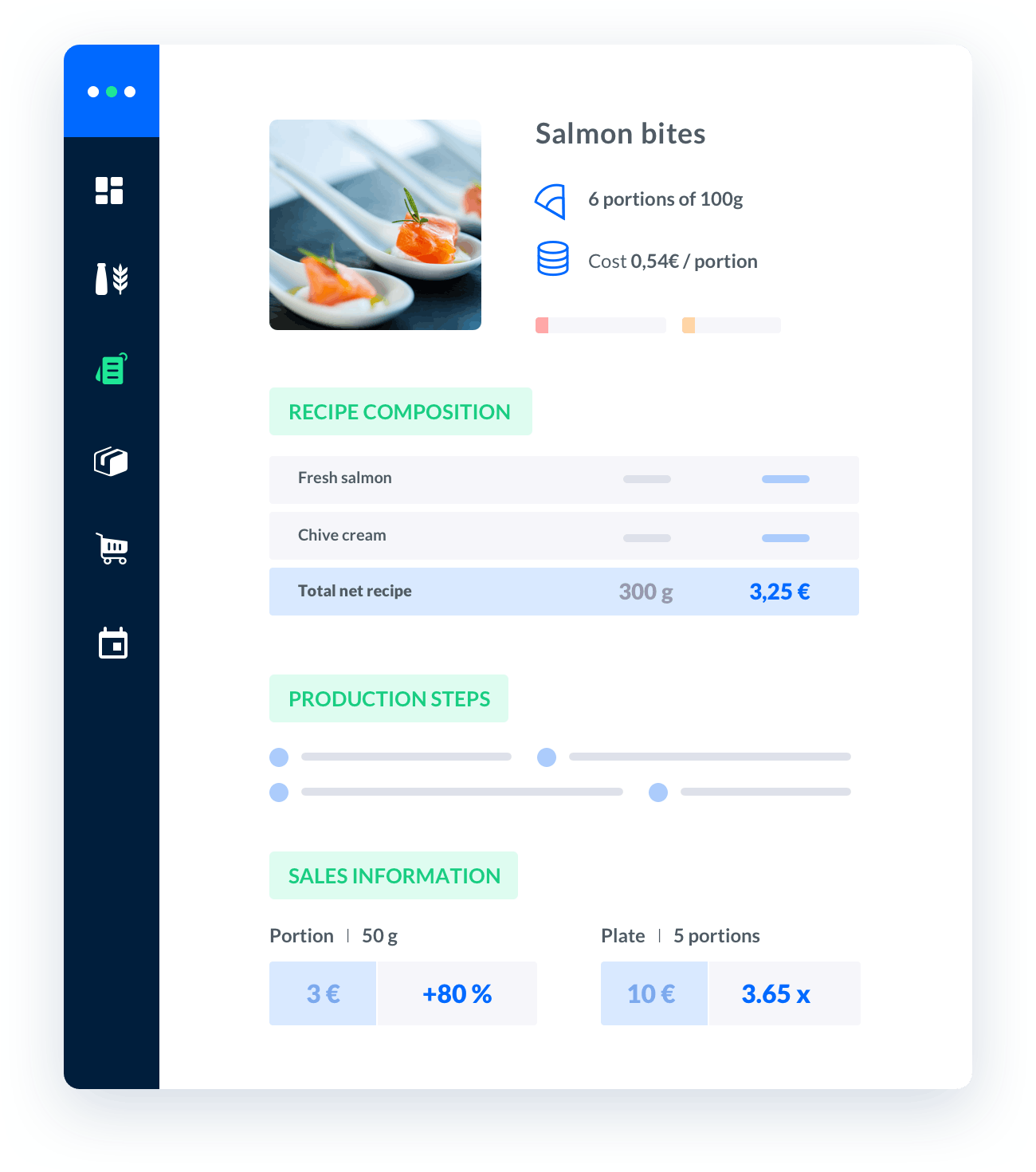restaurant startup costs breakdown
Restaurant startup costs can vary greatly depending on various factors such as location, size, concept, and more.As a professional in the catering industry, it is crucial to have a clear understanding of these costs to effectively plan and budget for your restaurant venture.

Melba: the food cost app to optimize the profitability of your restaurant
Discover how to optimize the profitability of your restaurant with melba

The ultimate guide to food cost restaurant
Learn more about the food cost basis and how to reduce your food cost percentage
Restaurant startup costs can vary greatly depending on various factors such as location, size, concept, and more. As a professional in the catering industry, it is crucial to have a clear understanding of these costs to effectively plan and budget for your restaurant venture. In this article, we will provide you with a comprehensive breakdown of the different expenses involved in starting a restaurant.
1. Initial Costs
1.1 Location
Choosing the right location for your restaurant is key to its success. The cost of the property or lease can significantly impact your startup costs. Factors such as rent, security deposit, and realtor fees should be taken into account.
1.2 Licenses and Permits
Obtaining the necessary licenses and permits is crucial to operate a restaurant legally. These may include health permits, liquor licenses, signage permits, and more. The costs associated with obtaining these licenses can vary depending on your location and local regulations.
1.3 Renovations and Interior Design
Creating an appealing and functional space is important for attracting customers. Costs related to renovations, interior design, and decor can vary depending on the size and condition of the space, as well as the level of customization required.
1.4 Equipment and Furniture
Investing in quality kitchen equipment, dining furniture, and bar supplies is essential for a successful restaurant. Costs for equipment can range from basic essentials like ovens and refrigerators to specialized equipment for specific cuisines.
1.5 Marketing and Branding
Building brand awareness is crucial for any new restaurant. Marketing expenses may include website development, logo design, menu printing, social media promotion, and advertising campaigns. These costs can vary depending on the scale and reach of your marketing efforts.
2. Ongoing Expenses
2.1 Rent and Utilities
Rent and utilities are recurring expenses that need to be factored into your budget. These costs can vary depending on the location, size of the space, and the services included in the lease agreement.
2.2 Payroll and Employee Benefits
Employee wages and benefits are ongoing costs that need to be considered. This includes salaries for chefs, cooks, servers, bartenders, and other staff members, as well as expenses related to employee benefits such as insurance and taxes.
2.3 Food and Beverage Costs
The cost of ingredients and beverages is a significant expense for any restaurant. It is important to carefully manage your food inventory, control portion sizes, and establish relationships with reliable suppliers to optimize costs and minimize waste.
2.4 Marketing and Advertising
Ongoing marketing and advertising efforts are necessary to attract and retain customers. This may include digital marketing campaigns, social media management, print ads, and promotions. The costs associated with these activities can vary depending on the strategies employed.
2.5 Maintenance and Repairs
Regular maintenance and repairs of equipment, furniture, and the physical space are necessary to ensure smooth operations. Budgeting for these expenses can help prevent unexpected costs and service disruptions.
3. Contingency Fund
It is crucial to set aside a contingency fund to cover unexpected expenses or emergencies. This fund can serve as a safety net during times of economic downturn, equipment breakdowns, or other unforeseen circumstances.
Starting a restaurant is an exciting but challenging endeavor. By understanding and accounting for the various costs involved, you can effectively plan your finances and increase your chances of success in the competitive catering industry.
To summarize, the breakdown of restaurant startup costs includes:
- Location expenses such as rent and realtor fees.
- Costs associated with licenses and permits.
- Renovations and interior design expenses.
- Investments in kitchen equipment and furniture.
- Marketing and branding costs.
- Ongoing expenses like rent, utilities, and payroll.
- Food and beverage costs.
- Continual marketing and advertising efforts.
- Maintenance and repair expenses.
- Creation of a contingency fund.
By carefully considering and budgeting for these costs, you can set your restaurant up for long-term success in the competitive catering industry. Good luck with your restaurant startup!






